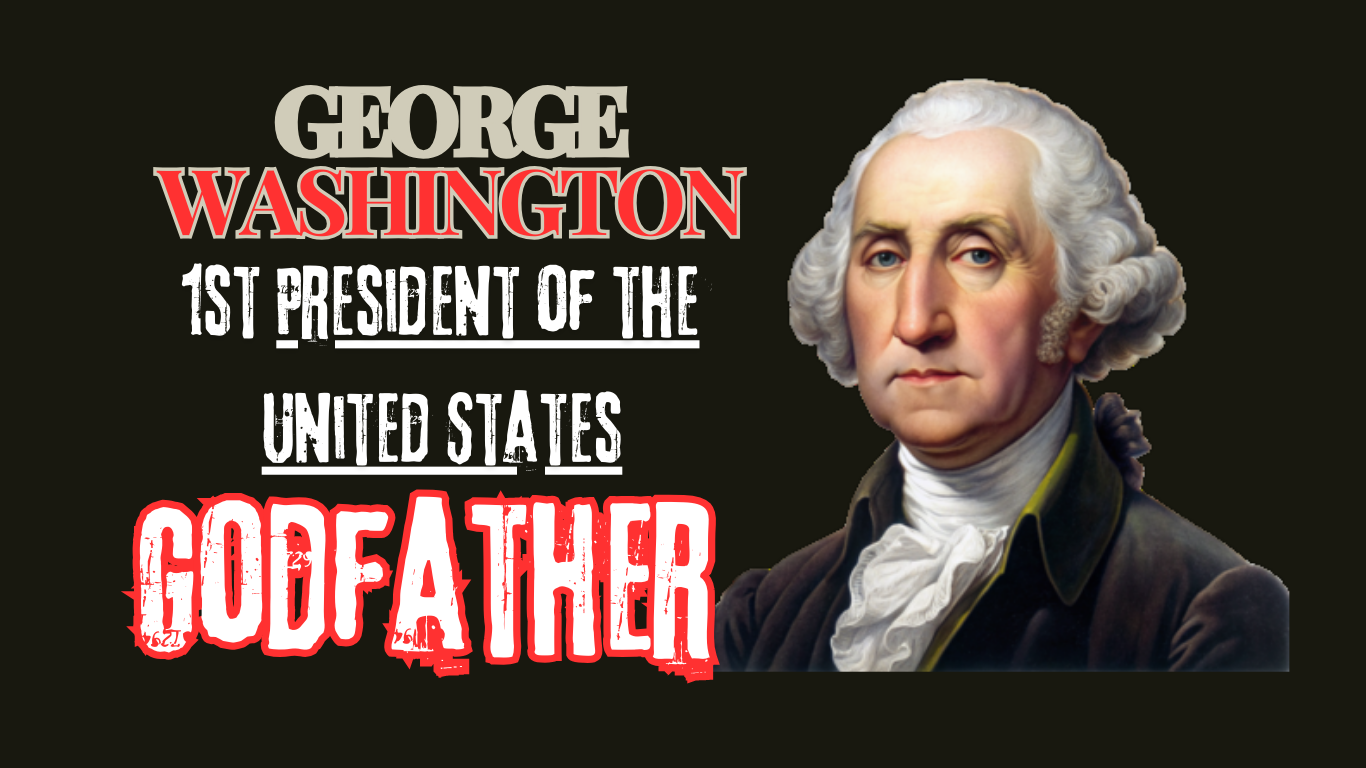George Washington is one of the most significant figures in American history, often referred to as the “Father of the Nation.” His leadership during the American Revolution and his role as the first President of the United States solidified his legacy as a key architect of American democracy.
Birth and Early Life of George Washington.
- Born: February 22, 1732.
- Place of Birth: Westmoreland County, Virginia, British America.
- Parents: Augustine Washington and Mary Ball Washington.
- Siblings: George was the eldest of six children from his father’s second marriage. He also had three older half-siblings from his father’s first marriage.
Washington was born into a moderately prosperous family of planters. His father, Augustine Washington, was a landowner and planter, while his mother, Mary Ball Washington, took care of their estate and children. After his father’s death in 1743, George inherited Ferry Farm, a plantation near Fredericksburg, Virginia, and his formal education ended at about age 11.
Adolescence and Early Career of George Washington.
Washington did not receive a formal education in Europe like many sons of wealthy families but was largely self-taught. He developed skills in surveying and mathematics, which laid the foundation for his early career as a land surveyor. At age 16, he worked as a surveyor in the Shenandoah Valley.
Military Beginnings and the French and Indian War with George Washington.
- Military Beginnings: At the age of 20, Washington joined the Virginia militia. In 1753, as tensions between Britain and France escalated in North America, Washington was sent by the Governor of Virginia to deliver a warning to the French, who had encroached on British territory in the Ohio Valley.
- French and Indian War: During the French and Indian War (1754–1763), Washington’s military career took off. He initially gained notoriety at the Battle of Jumonville Glen, and later for his retreat and defense during the Battle of Fort Necessity. Although his early military engagements were marked by a mixture of success and failure, Washington emerged from the war as a respected leader.
Life Between Wars of George Washington.
After the French and Indian War, Washington returned to Virginia and married Martha Dandridge Custis in January 1759, a wealthy widow with two children. Their marriage greatly increased his wealth and social standing. Washington focused on managing Mount Vernon, his estate, and became a successful planter, growing tobacco and experimenting with various crops.
Though Washington and Martha did not have children together, Washington adopted Martha’s children from her previous marriage, John “Jacky” Parke Custis and Martha “Patsy” Custis. Patsy tragically died in 1773 due to epilepsy, a deep personal loss for Washington.
The American Revolution George Washington.
- Commander-in-Chief of the Continental Army: In 1775, after growing discontent with British colonial policies, Washington was appointed Commander-in-Chief of the Continental Army by the Second Continental Congress. His leadership was crucial in the American War of Independence (1775–1783).
- Notable Campaigns: Washington’s strategy during the war was often marked by his ability to hold the army together, despite facing numerous hardships such as lack of supplies, poor morale, and severe winters. His victory in the Siege of Boston in 1776 boosted American morale. His daring crossing of the Delaware River and victory at the Battle of Trenton in December 1776 became legendary.
- Valley Forge: One of Washington’s most challenging times came during the winter of 1777–1778 at Valley Forge, Pennsylvania, where his troops suffered from extreme cold, starvation, and disease. However, his leadership, along with the training provided by Baron von Steuben, helped turn the Continental Army into a more disciplined force.
- Victory at Yorktown: In 1781, with the aid of French forces, Washington successfully led the Continental Army to victory at the Siege of Yorktown, which effectively ended the war. British General Cornwallis surrendered, marking a decisive point in the struggle for independence.
Post-War Life and Constitutional Convention George Washington.
After the war ended in 1783 with the Treaty of Paris, Washington returned to Mount Vernon and sought to retire from public life. However, his sense of duty would soon draw him back.
- Constitutional Convention (1787): In 1787, Washington was persuaded to preside over the Constitutional
- Convention in Philadelphia, where the U.S. Constitution was drafted. His leadership and neutrality helped ensure the success of the convention. Washington’s presence lent credibility to the new framework of government.
First President of the United States George Washington.
- Inauguration: On April 30, 1789, Washington was unanimously elected as the first President of the United States, a role he initially hesitated to accept, but one he took on out of a sense of duty. He served two terms, from 1789 to 1797.
- Presidency: Washington’s presidency was marked by his efforts to establish a strong national government, balance competing political factions, and set precedents for future presidents. He formed the first Presidential Cabinet, which included key figures like Thomas Jefferson (Secretary of State) and Alexander Hamilton (Secretary of the Treasury). His policies aimed to stabilize the newly formed republic and promote unity.
- Domestic Challenges: Washington faced significant domestic challenges, such as the Whiskey Rebellion (1791–1794), which he successfully quelled, demonstrating the power of the federal government. His administration also established the country’s financial system under Hamilton’s guidance.
- Foreign Policy: Washington’s foreign policy was focused on neutrality, especially regarding conflicts between European powers. His Farewell Address in 1796 warned against permanent alliances with foreign nations and political parties, advice that shaped American foreign policy for years to come.
Retirement and Death of George Washington.
After serving two terms, Washington chose to step down, setting an important precedent for peaceful transitions of power. He returned to Mount Vernon in 1797, hoping to live a quiet life as a private citizen.
- Final Years: In his later years, Washington focused on managing his plantation, dealing with agricultural innovations, and grappling with the issue of slavery, which he increasingly found morally troubling. In his will, Washington freed all of his slaves upon his death.
- Death: On December 14, 1799, at the age of 67, George Washington died of a throat infection (likely acute epiglottitis or quinsy) at his home in Mount Vernon, Virginia. His death was widely mourned both in the United States and abroad. He was buried at Mount Vernon, where his tomb remains a site of historical reverence.
Legacy of George Washington.
George Washington’s legacy as the “Father of the Nation” is well-earned. His leadership during the American Revolution, his role in crafting the U.S. Constitution, and his two terms as the first president helped lay the foundations of the American republic. His reputation for integrity, restraint, and dedication to republican values has made him a symbol of national unity and patriotism. His decision to relinquish power voluntarily after two terms became a defining moment in American political tradition.
Washington’s face adorns the U.S. dollar bill and the quarter, and numerous landmarks, such as the nation’s capital, Washington, D.C., and the iconic Washington Monument, are named in his honor.




Leave a Reply